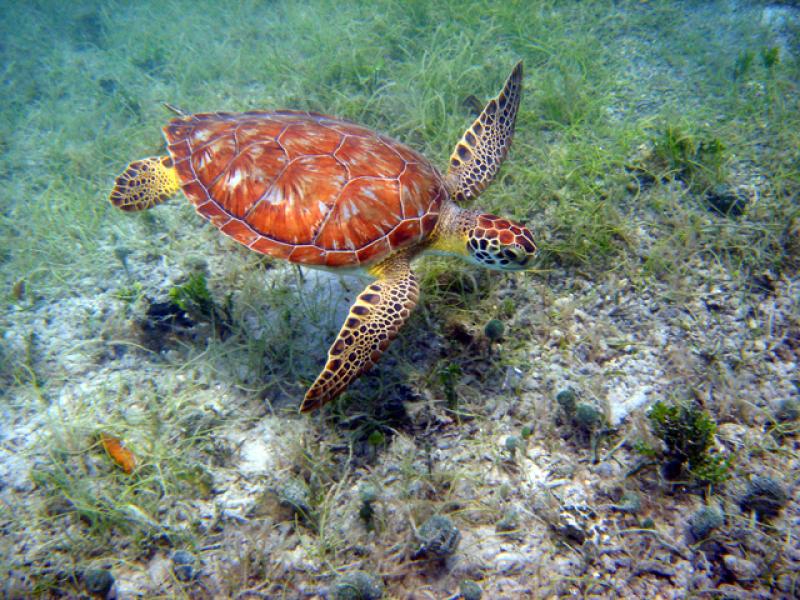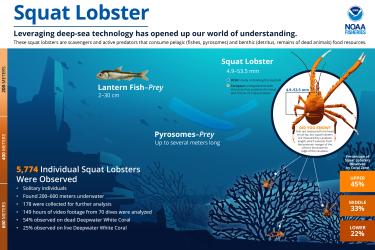Historically, green turtle populations all over the world have been depleted due to overharvesting. Some of the biggest threats to the species today include illegal hunting, illegal egg collection, bycatch, habitat loss, and climate change. Conservation laws and regulations are important tools to recover the species. In the United States, all sea turtles are protected under the Endangered Species Act. Many green turtle populations have increased since Congress passed the Act in 1973.
North Atlantic Population
The North Atlantic green turtle population’s range spans from Canada through Central America including Florida, a nesting hotspot. This Distinct Population Segment is listed as threatened under the Endangered Species Act.
Green turtles were once plentiful in Florida, but turtle fisheries in the late 1800s caught so many turtles that the population crashed. By the early 1900s, green turtles were scarce. Most green turtles imported to the United States for the restaurant trade were captured in the Caribbean. Green turtles were listed as threatened in 1978.
This major conservation action reduced human-caused threats in the marine environment and on nesting beaches, allowing the population to increase. Nesting in the state of Florida increased from around 4,000 nests in the 1980s to more than 230,000 in the 2010s.
While this is an encouraging sign for the population, natural and human caused threats remain a concern for all sea turtles.
Green turtles are rebounding in Florida, however that is not the case for the entire North Atlantic DPS. The population of nesting green turtles at Tortuguero, Costa Rica is the largest in the Caribbean. This population steadily increased for three decades, but prolonged hunting of turtles and eggs across the region resulted in a recent decline. Turtles in this nesting population live mostly outside of U.S. conservation protections. However, they are protected by the InterAmerican Convention, which protects sea turtles in member nations, including the United States. The decreasing trend at Tortuguero is alarming and serves as a reminder that global conservation of this species must continue. Sea turtle conservation requires long-term protection. Populations can be set back by natural and persistent human-caused threats, the effects of which may not appear in population data trends for decades.
Central North Pacific Population
June 1, 2023 marked the 50th anniversary of monitoring of the Hawaiian green turtle (honu) in the Central North Pacific Ocean. For decades, intrepid scientists have traveled 500 miles from the island of Oahu to Lalo (French Frigate Shoals), a low-lying and remote atoll in the Hawaiian archipelago. Each year, a small team travels for 3–5 days on a large ship to the islands for 3–6 months, working night and day to monitor this unique nesting site. As we reflect on the past 50 years of honu research, we celebrate the conservation successes but also look forward with uncertainty as the population faces new and growing threats.
After years of overharvesting, honu gained significant protections first by the State of Hawai'i in 1974 and then under the Endangered Species Act in 1978. By 2015, the number of nesting females was increasing by 3–5 percent per year. During the first 10 years of research at Lalo, scientists saw an average of 92 nesting females on East Island per year. Thirty years later, that average had increased to 411 nesting females per year, with a record high of 808 females observed in 2011. Then, in 2018, a hurricane struck Lalo and caused severe damage to East Island, the honu's primary nesting site within the atoll. Major storms like this one are likely to occur in the future due to climate change, putting the population further at risk.
NOAA scientists continue to focus their monitoring efforts at Lalo to understand the effects of climate change on the species. These include sex ratio changes due to warmer temperature, changes in migration, and decreased nesting habitat due to rising oceans.
East Pacific Population
The Eastern Pacific population stands out as the smallest and darkest green turtles in the world. Similar to other populations, these turtles—occurring from southern California to northern Chile—have been subjected to more than a century of human overexploitation. The primary nesting areas for this population are in southern Mexico, Galapagos Islands, and Costa Rica. Decades of egg collection and killing of adults at these sites decimated the population. By 1990, it had crashed.
For example, the largest green turtle nesting aggregation in this population occurs at Colola Beach, Mexico, where more than 15,000 females nested annually in the 1970s. However, by 1985 only 250 females came ashore at Colola Beach. The onset of nesting beach protection aided the population in a remarkable comeback. By 2020, Colola Beach was hosting more than 1,000 females nightly during peak nesting season, and nearly 10,000 females during the entire season!
Naturally, this rebound has coincided with a major increase in green turtle presence throughout the region. Juvenile and adult green turtles are present in protected bays and open coast habitats from San Diego Bay north to Orange County and in the Channel Islands. Originating from nesting beaches in Mexico, these turtles come to California to take advantage of the productive coastal ecosystems.
All sea turtle species still face many threats and continue to require effective management to recover. With the 50th anniversary of the Endangered Species Act, NOAA Fisheries reaffirms our commitment to protect and conserve all listed species.





